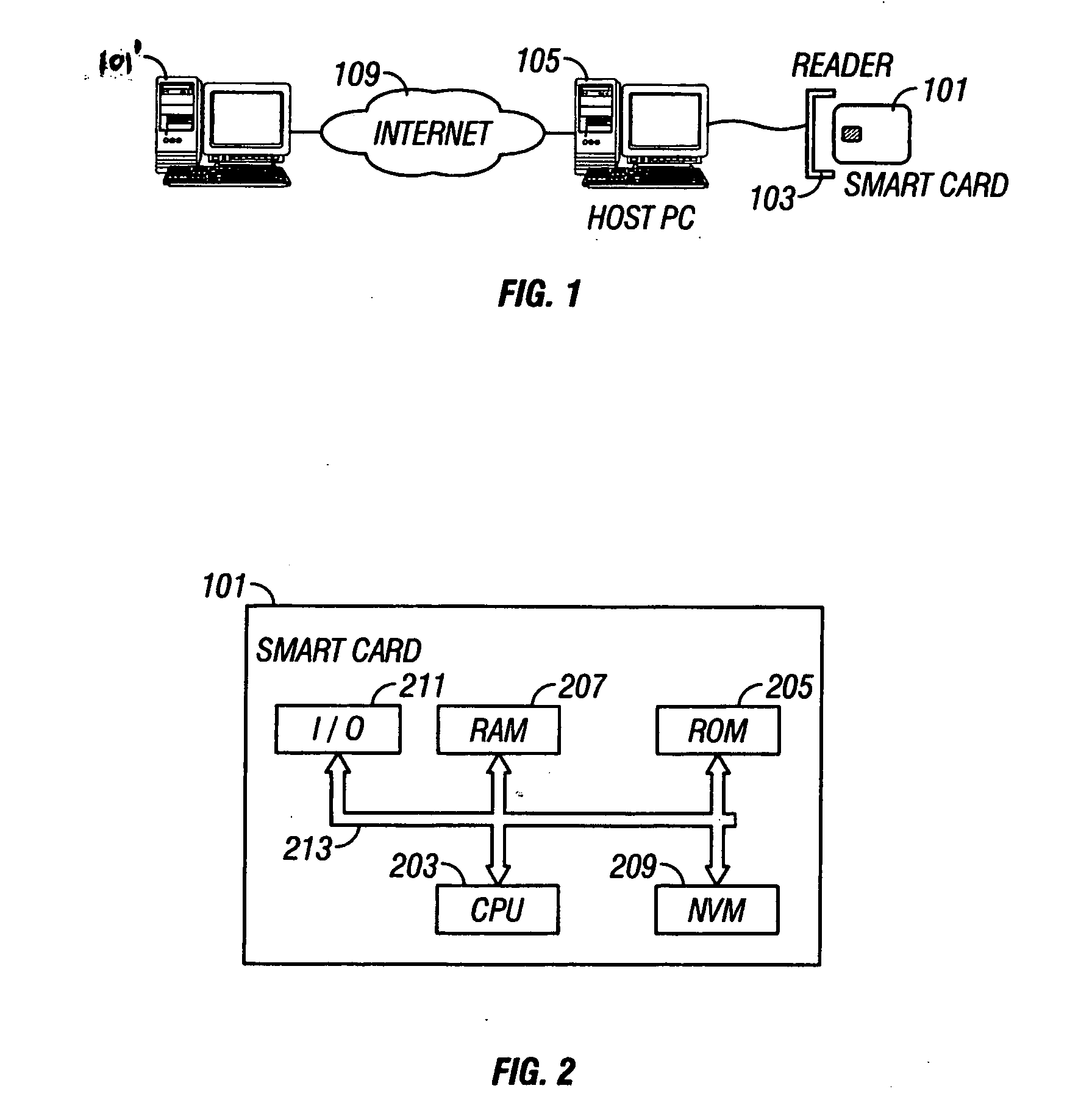System and method of secure login on insecure systems
- Summary
- Abstract
- Description
- Claims
- Application Information
AI Technical Summary
Benefits of technology
Problems solved by technology
Method used
Image
Examples
example i
TRANSFORMATION EXAMPLE I
[0093] The first example of formula-based transformation uses addition and multiplication to transform the PIN 805 into an OTP, the vPIN 811. Since it is the vPIN that is entered, and not the actual PIN, the latter is not compromised. There are two things that are kept secret by the user, a PIN, and a transformation PIN (tPIN). The PIN can be a regular four-digit number that is represented as P1P2P3P4 (e.g. 2459), and the transformation key can be a two-digit number represented as T1T2 (e.g. 13). The login screen that asks the user to enter the PIN for authentication will provide a random number. In this example the random number is a two-digit number represented by R1R2 (e.g. 46), which is transmitted from the authentication server 301 to the host computer 105 in step 909. On the client side, the random number key 801 is displayed on the web browser.
[0094] The mathematical transformation to convert the PIN into a virtual PIN that is represented by V1V2V3V4 ...
example two
Random Index Transformation from PIN to vPIN
[0102] A second approach using a transformation approach to determine a vPIN uses a simpler transformation logic that is based on a single arithmetic computation: addition. This logic is easier to compute as compared to the first example. The user remembers two secrets; a PIN represented by P1P2P3P4 (e.g. 2459) and a transformation PIN represented by T1T2T3T4 (e.g. 3576). The login page displays a 10 digit random number that is indexed from 0 to 9. The index of each digit is shown on top of the random digit for easy identification. For example:
TABLE 6Example of Random Index for use with Random IndexTransformationIndex0123456789Random Number5710629143
[0103]FIG. 11 is a flow-chart illustrating the use of the random-index transformation method for computing the vPIN from the PIN, tPIN, and a random number provided by the authorization server 301.
[0104] For each digit in the PIN, call it digit i, Step 1103, take that digit of the PIN (in a...
example 3
Use of Matrix in Transformation from PIN to vPIN
[0115] In an alternative embodiment, the transformation logic rather than generating and transmitting a random number, a matrix of random numbers is generated by the authentication server 301 and transmitted to the host computer 105 for display on the login window. This embodiment removes the overhead of addition. Rather than adding two numbers, the user simply picks a number from the pre-computed matrix. The authentication server 301 generates a 10×10 matrix. The PIN is represented along columns, while transformation PIN is represented along rows.
[0116]FIG. 16 is a graphical illustration of a transformation matrix used in this embodiment of the invention.
[0117] Each cell in the matrix 1601 is generated by computing the following transformation:
TABLE 8Formula for Calculating the Value of Matrix CellsCelli,j = (R [i] + j ) mod 10
wherein R is an array representing a ten-digit random number transmitted from the authentication server...
PUM
 Login to View More
Login to View More Abstract
Description
Claims
Application Information
 Login to View More
Login to View More - R&D
- Intellectual Property
- Life Sciences
- Materials
- Tech Scout
- Unparalleled Data Quality
- Higher Quality Content
- 60% Fewer Hallucinations
Browse by: Latest US Patents, China's latest patents, Technical Efficacy Thesaurus, Application Domain, Technology Topic, Popular Technical Reports.
© 2025 PatSnap. All rights reserved.Legal|Privacy policy|Modern Slavery Act Transparency Statement|Sitemap|About US| Contact US: help@patsnap.com



